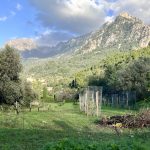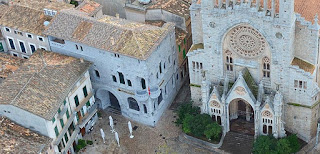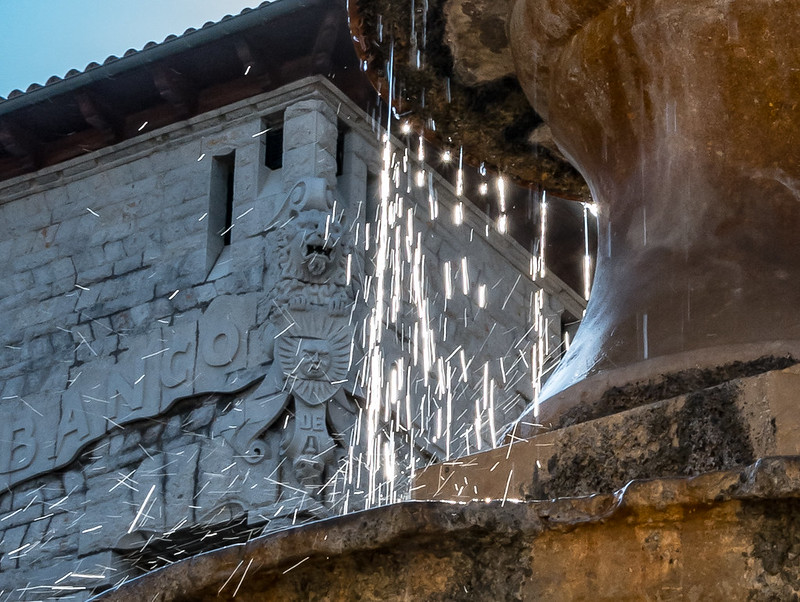The Cities of Majorca
By Andrew Ede
Published in the Majorca Daily Bulletin on
Sunday 15th May 2016
Published in the Majorca Daily Bulletin on
Sunday 15th May 2016
Shirley Roberts, who pens the Tuesday Spotlight on Soller column, provided an interesting post to her Soller Shirley Facebook page the other day. It reported that Soller is a city and was made so by King Alfonso XIII in 1905. I commented that there were two other “cities” that I was aware of in addition of course to Palma, whereupon Shirley suggested this might be the subject for a few articles. Well, I don’t know about a few but here’s one.
The term “city” poses a bit of an issue. The Spanish and Catalan are, respectively, “ciudad” and “ciutat”. But both words are used generally to refer to somewhere as a town (or a city). This, though, isn’t an official usage; it is just a generic term. Where it does get official is when the word refers to somewhere that has been granted the status of city by the crown.
The British are used to a city being so because of a cathedral, but that isn’t the case with Majorca’s cities: there is only one cathedral and that’s in Palma. But as far as I can make out, and I’m sure someone will correct me if I’m wrong, there are seven Majorcan cities in all. Palma is by far the largest, Soller we have already established is one, and the other five are Alcudia, Felanitx, Inca, Llucmajor and Manacor.
Palma is not only the largest city, it is the oldest. After the Catalan conquest, it was given the name Ciutat de Mallorca by Jaume I of Aragon. There are those who nowadays refer to the Ciutat. Indeed, it has been argued that this is how Palma should be known.
It was to be almost three hundred years after the 1229 conquest that Majorca acquired its second city – Alcudia. Back in Roman days, Alcudia (or Pollentia as it then was) was every bit as important as Palma (which is what the Romans called the city). By the sixteenth century it no longer was. So how did it come to merit a city status? It had everything to do with the Germanies (brotherhoods) uprising: the revolt by the artisan class against the aristocracy and against King Carlos I. Alcudia remained loyal, the nobility which hadn’t been massacred holing up behind its walls. When the revolt was crushed, Alcudia was named – in July 1523 – “city most faithful to the emperor”. Carlos, in addition to being king, was also the Holy Roman Emperor.
Although there are references today to Alcudia being a “ciutat”, the background to the awarding of this status might be said to cause a bit of an issue: the Germanies, certainly for some, were the goodies. Such bashfulness in city matters, always allowing for any reluctance to admit that any honour bestowed by the Bourbon dynasty is automatically a “bad thing”, would not apply to the other five cities. They were all given the title for their contributions to economic well-being.
The first of them, and so what became Majorca’s third city in 1886, was Felanitx. At the time, it was positively thriving and was a major centre for the wine trade. It was Maria Christina, the Queen regent from 1885 to 1902, who bestowed the honour, as she also did to Inca (city number four) on 13 March, 1900. This was in recognition of Inca’s growing industrial importance, especially where the leather and shoemaking industry was concerned.
It was her son, Alfonso XIII, who then got into the city-making business. He took the throne, aged 17, in 1902, and his first city was indeed Soller in 1905. Here was a place which, despite the occasional downturn, had been a hotbed of entrepreneurialism for decades. Its isolation, stuck in the mountains, had led to export trade from which much of its wealth was derived.
Seven years later and it was the turn of Manacor. Apart from anything else, this was, from 1902, the home of the Majorica pearls. By 1912 the company was booming, so was Manacor, and a parliamentary deputy by the name of Alexandre Rosselló petitioned the king, Alfonso, seeking the honour of “ciutat”. It was granted. The same Alexandre, friendly with Joaquín Ruiz Jiménez, who was basically the interior minister (not that it was called this), wielded his influence four years later, and Llucmajor became city number seven.
None of this really meant a lot. Alcudia had, back in its day, enjoyed tax privileges, but they were not a factor when the Queen Regent and Alfonso were handing out the titles. It was all about the honour, and so you have the seven cities of Majorca








